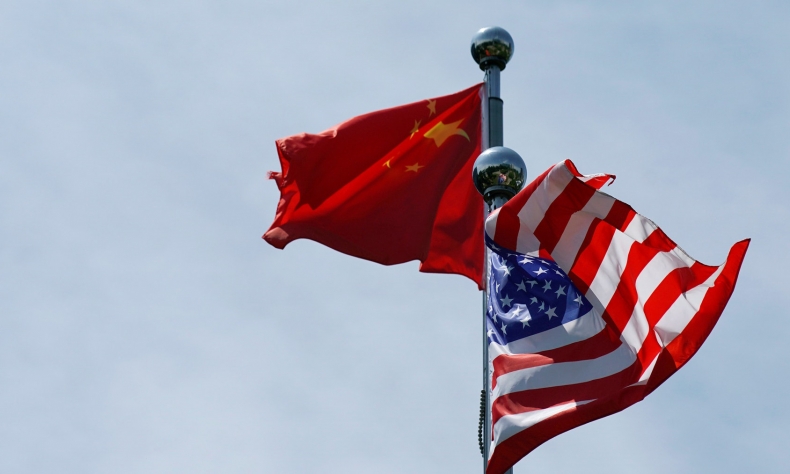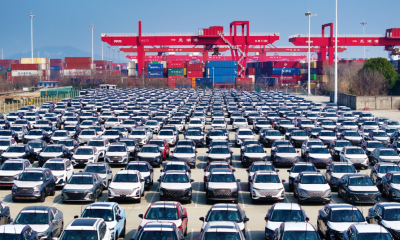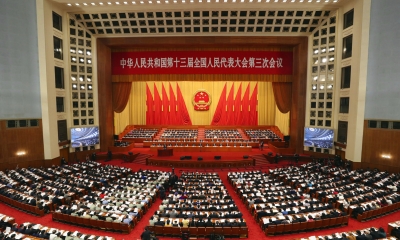America is Yielding China Trade to ASEAN and EU

China has not depended heavily on the U.S. for trade, but that tariffs presented the U.S. with major setbacks in its China trade.
Official Chinese customs data for H1 2019 shows that the U.S. was replaced by ASEAN as China’s second largest trading partner.
Bilateral China-U.S. trade in goods fell by 9% over a year ago to RMB 1753.57 billion, while China-ASEAN trade rose by 10.5% to RMB 1980.35 billion. China’s trade with the EU, its largest partner, grew even faster, by 11.2%, to RMB 2295.57 billion.
The Chinese Trade and Economy Had Limited Dependence on the U.S.
These numbers show that China has not depended heavily on the U.S. for trade, but that tariffs presented the U.S. with major setbacks in its China trade.
President Trump seemed to be satisfied when he attributed the slight slowdown in China’s economy in H1 2019 to his trade war. This is certainly not true. In that term, Chinese total trade volume still grew by 3.9% year-over-year in RMB terms, with exports up 6.1% and imports up 1.4%. Due to changes in the yuan-dollar exchange rate, the trade data in dollar term is different from that in RMB terms. The average exchange rate in H1 2019 was RMB 6.787 to the dollar, while that for H1 2018 was 6.402. The dollar appreciated 6% over yuan over the past year. Therefore, China’s total trade data for H1 2019 fell by 2% in dollar term, with exports remaining virtually unchanged (up 0.1) and imports down 4%. Nearly sixty percent of the global import fall came from the U.S., which was 29.9% off year-over-year, or $ 25.1 billion down, dragging down Chinese global imports by 2.5 percentage points.
On the Chinese export side, while its exports to the U.S. fell by 8.1%, or $18.38 billion, its exports to the EU increased by a net $ 11.03 billion, and to ASEAN by a net $11.60 billion. The latter two combined increased by $21.63 billion, more than enough to offset the fall to the U.S.
A further study finds that, Chinese exports to the U.S. account for a very small share of total Chinese industrial output. According to the National Bureau of Statistics of China, the total industrial output added value in China topped RMB 30 trillion ($4.43 trillion) in 2018. However, the export value shows the total output value of the product, not its added value. The total output value is on average four times the added value, or roughly RMB 120 trillion ($17.72 trillion). China’s total export delivery was RMB 12.39 trillion, or slightly over 10% of total output value. The export to the U.S. accounted for 18% of total Chinese export delivery, less than 2% of Chinese total industrial output value, and thus has very limited impact on the overall industrial production of the country. In fact, Chinese industrial added value increased by 6% in H1 2019, almost the same as in 2018 (up 6.1%), and equivalent to the increase in 2015 and 2016, before the trade tensions happened.
The U.S. Position in Chinese Global Trade is Shrinking
Two initial results of the U.S. tariffs on $250 billion of Chinese imports thus surfaced. First, the U.S.’s trade loss was larger than China’s. For H1 2019, U.S. exports to China fell by 29.9% year-over-year, while Chinese exports to the U.S. fell by 8.1%. In volume, it was $25.1 billion off in U.S. exports to China and $18.38 billion off in Chinese exports to the U.S. Second, the U.S. has been quickly yielding its China market share to the EU and ASEAN, sidelining itself. China-U.S. trade volume accounted for 13.7% of China’s total global trade volume in H1 2018. For H1 2019, its share fell to 12%, or 1.7 percentage points off. During the same period, the ASEAN share rose from 12.7% to 13.5%, 1.5 percentage points ahead of the U.S., while the EU expanded its lead as its share rose from 14.6% to 15.6%. The ASEAN and EU combined increased their share by 1.8 percentage points, covering almost exactly the 1.7 percentage points share yielded by the U.S. Now the share of the EU and ASEAN combined is almost 2.5 times larger than the U.S. share. In conclusion, the U.S. tariffs on Chinese goods did not hurt Chinese global exports, it merely cost the U.S. its presence in China.
Predominance of Asia and Europe in China’s Global Trade Landscape
The geo-trade pattern of China shows that its largest trading partner is Asia, which accounted for 51.5% of its total global trade in 2018, followed by Europe with 18.5%. The two combined accounted for 70% of China’s global trade. North America (the U.S., Canada, and Mexico) accounted for only 15.1%. Within Asia, ASEAN is a fast-growing partner, with China-ASEAN two-way trade volume increasing by 32.5% from 2013 to 2018, three times as fast as China’s total global trade growth. The China-ASEAN FTA, starting on January 1, 2010, entered a new phase and the bilateral trade entered a “diamond decade” as of 2013. The total volume of China-ASEAN trade will hit $1 trillion in a few years.
Based on the core ASEAN 10, we now see the emergence of ASEAN plus 6 (China, Japan, South Korea, India, Australia and New Zealand) in the developing RCEP free trade arrangement, which will be a much larger FTA than the China-ASEAN FTA. Chinese trade volume with 15 RCEP countries reached $1.49 billion, making it larger than China-U.S. trade and China-EU trade combined.
The EU has announced repeatedly that the future of Europe lies in Asia. The EU and China, though having various trade differences, share their stance on increasing bilateral trade and investment, supporting multilateralism, and opposing unilateralism and protectionism. China and the EU have kicked off talks on bilateral investment agreement.
Asia and Europe share the same continent, and combined they account for 70% of total China global trade, providing a vast and solid future for China.
China’s geo-trade pattern observation leads to another observation: If Washington continues unilateral tariffs and other trade restrictions on China, the U.S. share in China’s total global trade, which is already less than one-eighth, will further decline. Unlike the EU and Asia, where intra-EU and intra-Asia trade account for over 50% of their total global trade, Intra-America trade accounts for only one third of total U.S. global trade, with Asia and the Pacific accounting for almost 60%. Hence, a further stand-off with China and a continuous fall in trade with China will not meet American interests.
Early Conclusion of an Equal, Mutual Beneficial Deal Anticipated
The predominance of Asia and Europe in China’s global trade pattern does not mean that China neglects trade with the U.S. On the contrary, China attaches great importance to a strong, stable, and sustainable trade relationship with the U.S. The early conclusion of an equal and mutually beneficial trade deal will certainly be good for the U.S., for China, and for the whole world.
Source: China-US Focus
 Facebook
Facebook
 Twitter
Twitter
 Linkedin
Linkedin
 Google +
Google +







